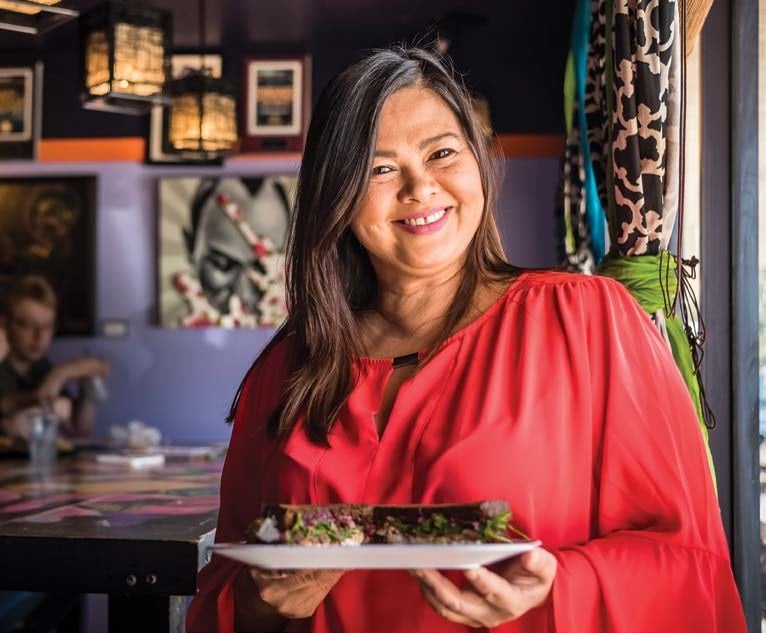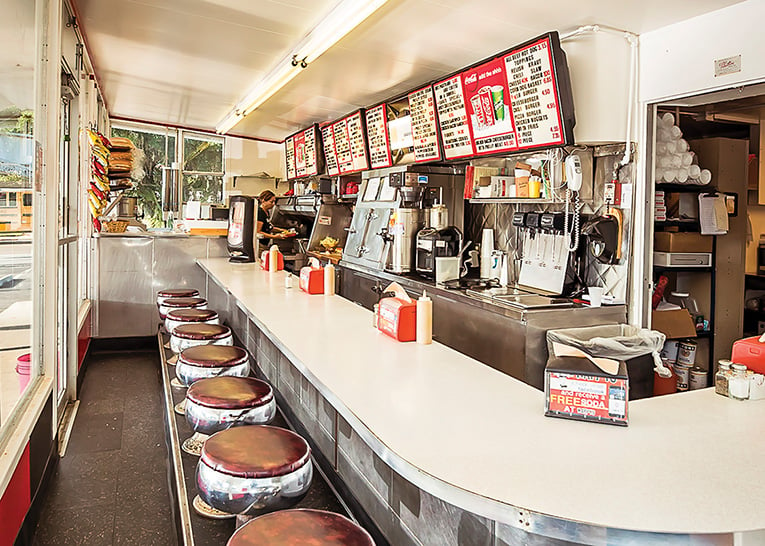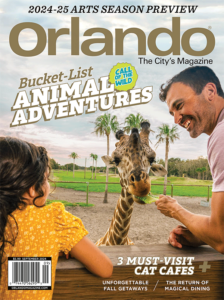Surviving the Coronavirus
Central Floridians who came down with severe cases of COVID-19 in the early stages of the pandemic needed every advantage they could muster to win the battle of their lives.
Maybe, when this thing first hit and we all became shut-ins, it felt like time was inching along at a crawl for you. Now think about Jason Denney, a 51-year-old Windermere resident and combat veteran who wanted it that way, needed it that way.
Breathing, for him, had become a battle of will he decided to break down into focused, five-minute rounds, fought in the solitude of the no-visitors hospital room he shared with an opponent he refers to as “that thing that had its claws dug into my lungs.”
Or maybe you took advantage of one of the few sanctioned social-distancing options and went outside to get some exercise. If so you would have had company, on a Sunday morning in late March, in a fiercely independent 37-year-old Sanford construction-project coordinator with a lifelong passion for running named Joline Griffin.
After a three-mile jog around a lake near her home in a Sanford subdivision, and in the midst of fixing her two children a bacon and French toast breakfast whose fragrance would be the last scent she’d be able to savor for weeks, Griffin was brought to her knees by a sudden sharp pain radiating from her sternum.
The first emergency-room doctor she saw at Central Florida Regional Hospital guessed kidney stones. Griffin, having consulted with WebMD on her way in, countered with her own diagnosis: appendicitis. Turns out they were both wrong.
Or maybe you’re the kind of person who bore up pretty well in the waking hours of a shelter-in-place routine but had restless dreams by night. But you didn’t dream the dreams that a 52-year-old retired Orlando attorney named Kevin Rathel was having back then. Be grateful for that.
Yet all three of them were lucky. That may sound like an improbable word to apply to anyone who contracts a life-threatening case of COVID-19, the painful, unpredictable, potentially lethal disease triggered by the novel coronavirus. But each of them had a particular advantage that helped them survive, along with another one that they shared: They live here.
They live in a region whose population does not rely heavily on mass transportation, one that sprawls across a warm-weather landscape rather than being focused in a dense metropolitan area and whose influx of international visitors was cut off when the theme parks shut down. That gave Central Florida health institutions time to prepare for whatever onslaught came their way.
“Our strategic leadership team had told us essentially when it was going to happen, where the peak was going to be, and what the projected possibilities were—between low, medium, and high,” says Dr. George Ralls, chief quality officer at Orlando Health. The COVID-19 caseload in hospitals across Central Florida never exceeded the first two categories.
Still, the disease presented the challenge of a lifetime for health care professionals, whose faces were soon etched with thin red welts left by the masks they had to wear to protect themselves, a pandemic’s version of worry lines as doctors, nurses and other hospital staffers became emotional surrogates for patients who had to be sequestered from their loved ones.
“We became a second family to our patients,” says Tyler Mora, nurse manager of an AdventHealth COVID-19 unit. “We took on much, much deeper emotional attachments. That was our new normal.”
Joline Griffin celebrated her birthday in her hospital room with a small group of nurses and a whipped-cream-topped angel food cake—although, because of one of the stranger symptoms of the virus, she still couldn’t taste a thing.
Jason Denney looked forward to seeing the housekeeper who made periodic visits to his room. “She was so pleasant. She would talk to me as she did her job, just about normal, everyday subjects. And she would say: ‘You’re gonna beat this thing. God’s on your side.’ ”
Marcella Carmona Rivera has yet to meet Orlando Health nurse Lonnie Williams face to face. Yet she says: “I feel like I have known him forever.” It seemed as though he had become a family member, keeping both her and the mother of her husband informed about his progress. Juan Rivera Viruet, a 43-year-old truck driver, had driven an 18-wheeler north to drop it off for a friend and likely contracted the virus on his flight home.
Despite all their efforts, several area caregivers and hospital staffers contracted the disease themselves. Fearing that possibility, Kyle McBride, a nurse at Osceola Regional Medical Center, lived apart from his wife and four children for six weeks to ensure that he would not unwittingly infect them.
“The stress level was always there,” he says. “Even if you weren’t busy, all the additional procedures and things you had to worry about—the fear of the unknown—was always on your mind.”
What contributed to the camaraderie that developed between patients and caregivers in the COVID-19 units was that the “novel” in “novel coronavirus” applied to everybody. In the early days of the pandemic, everyone was a pioneer.
Like all the other front-line doctors in the country, Dr. Mai Vo, a pulmonologist and critical care specialist who oversaw the treatment of COVID-19 patients at Orlando Regional Medical Center, was hampered as a clinician because with a virus so new, no standardized treatments and drugs were available. So she often combined 12-hour-plus shifts at the hospital with after-hours research in an effort to keep up with the rapidly shifting profile of the virus as it leapfrogged from one part of the world to another.
“You don’t know the pathology. You don’t know enough about what you are encountering,” she says. “The studies coming out of China said one thing. But different strains of the virus could react in different ways. It could present in one way in New York and then another way elsewhere. We learned a lot from what was coming out of Italy.”
What frustrated her most about COVID-19 at a human level was the necessity of keeping patients secluded from their families because of its extraordinary infectiousness. It was hard enough when they were healing. It was worse when they did not.
On Easter Sunday, Vo could see that one of her patients was very close to dying. Under normal circumstances she could have called the family, asked them to come in to be with their loved one for his last moments.
But she couldn’t. Rather than gather around the bedside, the family was robbed of that spare tactile comfort and had to bid goodbye over a cell phone to a father and husband who was long past responding to them. She was struck by the sterility of it, of their helplessness in the situation, and her own.
“I cried that day,” she says. “I cried in that room.” Then she pulled herself together and moved on to the patient in the room just next door.
*************
What Jason Denney had going for him when he contracted COVID-19 was his familiarity with a life-saving admonition: “Focus on the bubble.”
It means knowing how to shut out distractions and remain focused on the task at hand. Denney’s grasp of its importance dates back to his two-decade career in the Air Force. During his flight test career he flew F-15s, F-16s and a Boeing 707 radar and surveillance aircraft. He saw combat in Afghanistan both on the ground and in the air. Focusing on the bubble is an occupational necessity when your landing gear fails or you find yourself in an aircraft whose engine is on fire, which happened more than once to Denney, who retired from the Air Force to take a job as a weapons system program director for a Central Florida defense contractor.
He thinks he was exposed to the coronavirus while traveling back to Orlando, where he lives with his wife and three children, from a business meeting in Cincinnati. He had fever, chills, a loss of taste and smell and a sensation of being smothered: “I can only describe it to you as suffering.”
He’d already had an issue with his lungs, having experienced several bouts with pulmonary emboli—clots in the arteries that bring blood to the lungs. That put him in a perilous category: the dreaded co-morbidity, a physical issue that can hamper a patient’s ability to fight off the infection.
By the time he was admitted to Dr. P. Phillips Hospital his breathing was so shallow that the medical staff suggested he be put on a ventilator—a device that requires patients too weak to breathe on their own to be put into a medically induced coma and intubated so the machine can take over the job of infusing oxygen and diffusing carbon dioxide until, hopefully, the damaged lungs heal.
Denney refused. “I wanted to fight. I wanted to fight for my family and friends. I didn’t want them to take that away from me.” The staff agreed to monitor him closely while Denney fought.
What he didn’t know at the time is that the survival chances for COVID-19 patients who have to be put on a ventilator is not good, according to various studies —one chance in five to recover, according to a frequently quoted report.
He struggled through several grueling days of breathing, assisted by externally administered pressurized oxygen, heated to make it more easily absorbed.
His worst night was after hearing that his youngest child, Sean, a 16-year-old student at Bishop Moore High School, had come down with the disease. “I felt so guilty. I’m supposed to protect my family,” he says.
The next day his doctor, Antonio Crespo, sat at his bedside, holding his hand. Word of Denney’s distress had reached a family friend, Father Benjamin Lehnertz from St. Joseph Catholic Church, who paid a visit. Denney’s morale got another boost at mealtime, when he realized he could actually taste the strawberry ice cream on his tray. Two days later he was well enough to go home.
He was a patriot before COVID-19 and has become a stronger one since. He is disappointed by the divisiveness generated by the pandemic in this country. “This is our World War II moment,” he says. “This virus attacks you no matter what race, sex, orientation, economic background, or political party you are. We are all Americans and we are all in this together.”
*************
What Joline Griffin had going for her when she contracted COVID-19 was running. Doctors dealing with the outbreak saw the disease play out among patients in widely different ways. It’s safe to say Griffin is the only patient in Central Florida who was diagnosed with double pneumonia just after a three-mile run. Apart from those chest pains, she’d felt fine. With their heightened capacity from years of running, her lungs were that strong.
“When the doctor (infectious disease specialist Naveed Hamid) walked in and saw me, he said, ‘I didn’t expect you to look this good,’ ” she says. By then he’d seen not only the scan of her lungs but bloodwork that indicated the disease was also disrupting her liver and kidney functions.
Griffin’s longstanding stoicism was another attribute that may have had something to do with how well she was holding up. Raised in foster care from age 12 in Wisconsin and Minnesota, she developed an independent spirit, an aversion to cold weather, and a lifelong dream of moving to Florida. She thinks she contracted the virus either during a visit to a convenience store or while buying groceries.
She responded well after being admitted, cycling through the pneumonia while being treated with hydroxychloroquine and azithromycin. The challenges emerged after she came home from the hospital.
Doctors who are still learning about the long-term damage the virus can cause tell her that her lungs, in spite of that lifelong conditioning, might have suffered permanent damage.
Though she didn’t venture out of her house until after the designated quarantine, she’s found herself more than once in situations where “people treat me like I’m some sort of zombie.” Long after she’d gone through the required quarantine days, when she went to UPS to send a package, someone recognized her from a newscast, pointed her out to other customers, and made a scene.
She also has a problem that numerous Florida residents needn’t contract a virus to understand: She’s been laid off from her job—and after weeks of trying, still hasn’t been able to work her way through the bureaucratic wickets to get her unemployment benefits.
*************
What Kevin Rathel had going for him when he contracted COVID-19 was the woman he had married on March 21, 1992—almost 28 years to the day before he came down with the disease.
Both he and Stacie Rathel caught the virus from their son, who probably contracted it while working as manager of an Orlando pizza franchise.
Stacie’s bout with the disease was painful—“Everything hurt. One day I realized: My cheeks hurt”—but brief. She recovered without hospitalization, as did her son. But Kevin, a former attorney turned business consultant, was not so fortunate. Soon he was too weak to climb the stairs to his bedroom: “I was panting like a dog on a hot summer day.” In early April, he was admitted to Orlando Regional Medical Center.
When he didn’t respond to treatment, which at the time consisted of a combination of three stopgap experimental drugs—hydroxychloroquine, azithromycin and tocilizumab — doctors at ORMC decided to put him on a ventilator. For days that stretched into weeks Kevin shuttled between being vaguely aware of his surroundings and having violent nightmares. His condition was still not improving. The more time went by, the slimmer his odds became.
“I heard this big clock ticking,” says Stacie.
She began waging a social media campaign on her husband’s behalf that would eventually encompass a state senator, the president of a pharmaceutical firm, top Orlando Health executives, and numerous friends and friends of friends. “I am like a velvet hammer,” she says. “I am very polite, very respectful of the system. But I’m also very persistent. I just keep banging away.”
She had already somehow arranged through a contact for Kevin to be the first patient in Orlando to be treated with a promising new drug called remdesevir when a breakthrough emerged from her efforts on another front. She had been searching for someone who had recovered from the virus, was her husband’s blood type, and whose donated plasma would contain antibodies that could help Kevin fight off the disease.
Those efforts suddenly turned up a willing benefactor. A South Florida business owner named James Crocker had texted his friend John Stemberger, an Orlando attorney, to try to engage him in a telephone debate over how soon the country needed to open up for business. Stemberger replied that he didn’t have time to talk politics because he was trying to help a friend’s wife find a suitable blood donor to save her husband’s life.
He sent a text to Crocker: “My friend is hours away from dying and they need someone that can provide the antibodies who has had the disease already,” adding that the search “was like trying to find a needle in a haystack.”
A reply soon came back. “I’m your needle.”
Crocker had contracted the virus at a funeral a few weeks before and recovered from it at home—not, he said in an interview, without considerable discomfort: “Anybody who tells you this virus is just like the flu doesn’t know what the hell they’re talking about.”
Within hours of his brief conversation with Stemberger, Crocker was on I-95 in his 2019 Tesla Model S 90D, headed for Orlando.
He briefly met Stacie, got himself a hotel room, and spent the next day driving around trying to find a rapid coronavirus test at a time when such kits were hard to track down. Meanwhile Stacie was working the phone. Thanks to her efforts, by the end of the day Crocker had been swabbed by Dr. Ralls, the Orlando Health quality officer. The plasma he donated through OneBlood was rushed through processing and administered to Kevin Rathel the next day. Rathel was the first person in the Southeast to receive what’s called a convalescent plasma donation.
His condition improved almost immediately. A few days later, the physician handling Rathel’s treatment was impressed enough with the effects of the 11-ounce plasma donation that she decided she could wean him from the ventilator.
It had been a rough morning for Dr. Mai Vo.
This was the same day she broke down in tears over the family that had to say their goodbyes without the comfort of a bedside farewell. But after pulling herself together, she moved next door, to Rathel’s room, took him off the ventilator, and roused him as well as she could, holding his groggy eyelids open so he could FaceTime with his wife and children.
There’s a video of the moment. Rathel is too groggy to speak, but he can hear the voices of his family, see their faces on the phone that’s being held up. Tears well up in his eyes.
A few days later, he was home.
Stacie Rathel is a devout Baptist. She sees God’s hand in the chain of needle-in-a-haystack events that led up to that moment. It was all too improbable, all the twists and turns too complex and unfathomable to be coincidental. It would be very difficult to mount an argument to the contrary with her.
For one thing, there’s that velvet hammer of hers. For another, there’s the matter of exactly what day it was when Kevin Rathel opened his eyes and rejoined the land of the living: Easter Sunday.







